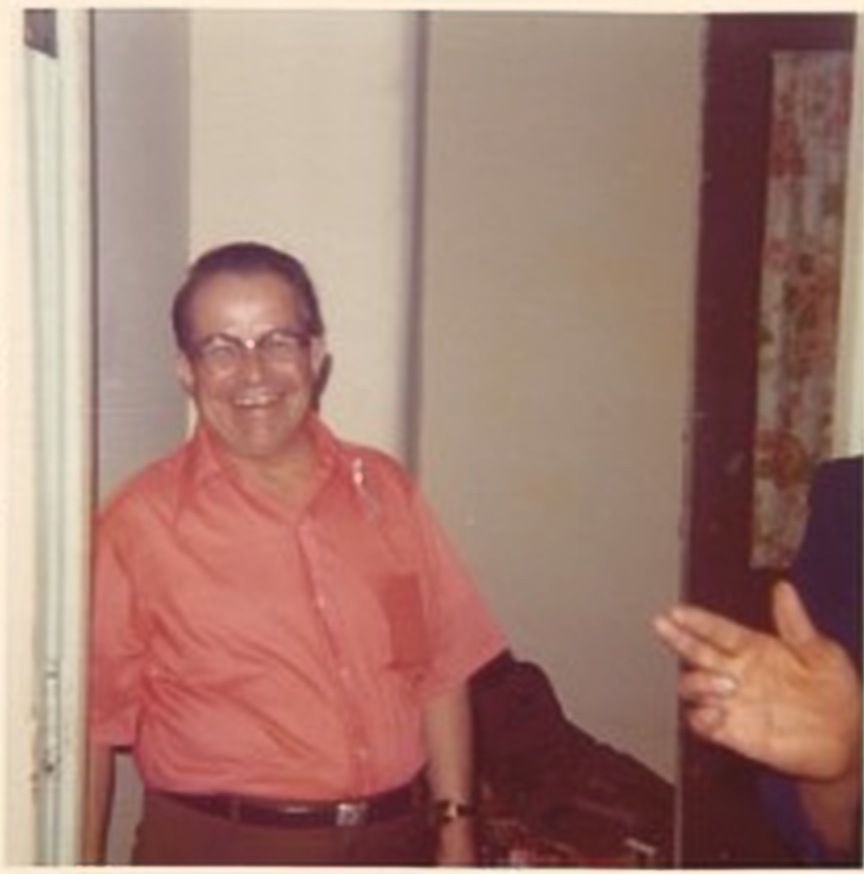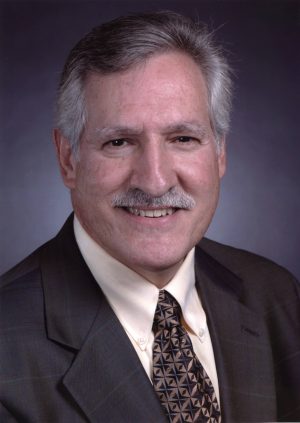The Puerto Rican community in Milwaukee dates from the early 1950s when workers were recruited to the city’s foundries and tanneries through the Chicago office of the Puerto Rican Department of Labor.[1] As the economy in Puerto Rico shifted from agriculture to manufacturing in the 1940s, thousands of farm workers were displaced. Island political leaders developed a strategy to deal with the resulting unemployment and encouraged and assisted Puerto Ricans to move to the United States mainland. Although initially migrants were encouraged to move to New York City, by the early 1950s the Midwest became a major destination, with Puerto Rican communities growing in Chicago; Gary, Indiana; and Lorain, Ohio, among others. The first Puerto Ricans to permanently settle in Milwaukee were Juan Torres Bautista and the brothers Pascual and Casito Romero, who arrived in 1948 after working in the farm migrant stream.[2]
Puerto Ricans initially settled on the East Side of the city, in an area north of Kilbourn Avenue and east of the Milwaukee River.[3] In the 1960s this neighborhood was displaced by urban renewal projects[4] and Puerto Ricans dispersed to the Riverwest area around the intersection of Holton and Center Streets, and the city’s Near South Side between the Menomonee Valley, First Street, Lincoln Avenue, and 27th Street.
From a few hundred families in the 1950s the Puerto Rican population grew to almost 14,000 in 1990.[5] In 2000 the U.S. Census counted over 19,000 Puerto Ricans in the city of Milwaukee, and by 2020 that number increased to an estimated more than 28,000. If we include other Puerto Ricans living in the rest of Milwaukee County and the adjacent county of Waukesha, the total estimated number of Puerto Ricans rises to almost 38,000.[6]
When Puerto Ricans first arrived, many took unskilled jobs in manufacturing sectors like foundries and tanneries that were already experiencing a decline and would subsequently close down,[7] denying them the mobility ladder to skilled and white collar jobs that previous European immigrants to the city enjoyed. In addition, they faced language discrimination and racism when applying for the better paying jobs.[8] Puerto Ricans today concentrate in working class and service occupations and also include a small middle class of professionals, all spread over the range of industries in the region. Compared to Puerto Ricans in other locations of the United States, Puerto Ricans in Milwaukee exhibit high rates of residential segregation from whites and lower levels of household income.[9] In 2010 the median household income for Puerto Ricans in the city of Milwaukee was $28,709, compared to $36,733 in the city of Chicago and a bit under $37,000 for all U.S. Puerto Ricans.[10]
The adjustment difficulties Puerto Ricans experienced while settling in Milwaukee were first documented by a study conducted in 1953 by Dr. Rudolph Morris of Marquette University. He found Puerto Ricans were affected by malnutrition, lack of access to medical facilities, and overcrowded and substandard housing.[11]
The large majority of Puerto Ricans who initially migrated to Milwaukee were Catholics. In the 1953 Morris study, almost 90% of respondents were Catholic, and 7.3% Protestant. The survey of the community in 1976 found the percentage identifying as Catholic at 82% while Protestant denominations made 18% of respondents.[12]
Puerto Ricans’ first community organization was called the Puerto Rican Democratic Organization, Inc. This group was incorporated on January 19, 1961, and was primarily oriented towards social activities, such as dances and dinners.[13] This organization later evolved into the Puerto Rican Organization of Wisconsin, Inc., which was more interested in advancing the political, economic, and social status of Puerto Ricans in Milwaukee. In 1976 the organization commissioned a study of the Puerto Rican community on the northeast side. In 1977 it tried to re-organize and expand its programs to the community on the northeast side but was unsuccessful in raising the necessary funds.[14]
Puerto Ricans also joined other Latinos in establishing pan-Latino organizations, such as the Latin American Union for Civil Rights, created in 1969 under the leadership of Mexican-American Ernesto Chacon and Orlando Costas, a Puerto Rican pastor at the South Side’s Evangelical Baptist Church.[15] In August 1969, Puerto Ricans joined Mexicans in the creation of La Guardia, a bilingual monthly community magazine.[16] On educational issues, in 1973, Puerto Rican activist and educator Luis Antonio (Tony) Baéz joined Latino leaders Mercedes Rivas and Aurora Weir to create the Citywide Bilingual Bicultural Advisory Committee (CWBBAC). During the 1970s and into the 1980s, CWBBAC was very successful in advocating for the educational needs and legal rights of Hispanic students at the time when Milwaukee Public Schools was implementing a court-ordered desegregation plan.[17]
Puerto Ricans have made important contributions in the political and educational arenas. Attorney Pedro A. Colón, for example, was the first Latino elected to the Wisconsin state legislature, representing the 8th Assembly district from 1999 to 2010. Colón was then appointed as a Wisconsin circuit court judge in 2010 and was elected to the seat in 2011. In 2004, economist Carlos E. Santiago was installed as the seventh chancellor of the University of Wisconsin-Milwaukee and held the position until 2010, contributing to the expansion of the school’s research arm and capital capacities by helping to raise $125 million from the private sector. In 2012, José G. Pérez was elected to the Milwaukee Common Council, becoming the first Puerto Rican elected as an alderman in Milwaukee.[18] In 2022 he became the first Latino president of the Milwaukee Common Council.[19]
Footnotes [+]
- ^ Cristobal Berry-Cabán, “Puerto Rican Strategies for Survival: Work and Kinship among Esperanceños in Milwaukee” (Ph.D. diss., University of Wisconsin-Milwaukee, 1981). This entry was posted on November 11, 2016 and updated on September 14, 2022.
- ^ Elisa Romero, personal communication, July 16, 2015.
- ^ Avelardo Valdez, “The Social and Occupational Integration among Mexican and Puerto Rican Ethnics in an Urban Industrial Society” (Ph.D. diss., University of California-Los Angeles, 1979); Tom Tolan, “Nueva Yores,” Riverwest Currents, April 2003, last accessed July 2, 2017.
- ^ Niles William Niemuth, “Urban Renewal and the Development of Milwaukee’s African American Community: 1960-1980” (Master’s thesis, University of Wisconsin-Milwaukee, 2014).
- ^ U.S. Bureau of the Census, 1990 Census of Population, General Population Characteristics, Wisconsin, 1990 CP-1-51 (Washington, D.C.: GPO, 1992), 480, available at https://usa.ipums.org/usa/resources/voliii/pubdocs/1990/cp1/cp-1-51.pdf, accessed August 31, 2016.
- ^ U.S. Census Bureau American FactFinder, DP-1, Profile of General Demographic Characteristics: 2000, Census 2000 Summary File 1 (SF 1) 100-Percent Data; U.S. Census Bureau, American Community Survey, 2020 Five Year Estimates, B03001, accessed September 8, 2022.
- ^ Berry-Cabán, “Puerto Rican Strategies for Survival,” 92.
- ^ Cristobal Berry-Cabán, “A Survey of the Puerto Rican Community on Milwaukee’s Northeast Side in 1976” (Milwaukee: The Milwaukee Urban Observatory, 1977).
- ^ Edwin Meléndez and Carlos Vargas-Ramos, eds., Puerto Ricans at the Dawn of the Millennium (New York: Center for Puerto Rican Studies, 2014).
- ^ U.S. Census Bureau, American FactFinder, Median Household Income in the past 12 Months (in 2010 Inflation-adjusted Dollars), 2006-2010 American Community Survey Selected Population Tables, B19013, http://factfinder.census.gov/faces/tableservices/jsf/pages/productview.xhtml?pid=ACS_10_SF4_B19013&prodType=table, accessed August 31, 2016; Centro, Center for Puerto Rican Studies, “Puerto Ricans in the U.S. Earn Less Money and Pay More for Housing,” accessed August 31, 2016.
- ^ Rudolph Morris, “Some Aspects of the Life of the Puerto Rican in Milwaukee” (Milwaukee: The Milwaukee Intercollegiate Council on Intergroup Relations, 1953).
- ^ Berry-Cabán, “A Survey of the Puerto Rican Community on Milwaukee’s Northeast Side in 1976,” 15.
- ^ Berry-Cabán, “A Survey of the Puerto Rican Community on Milwaukee’s Northeast Side in 1976,” 24.
- ^ Berry-Cabán, “A Survey of the Puerto Rican Community on Milwaukee’s Northeast Side in 1976,” 25; Berry-Cabán, “Puerto Rican Strategies.”
- ^ Marc Simon Rodriguez, The Tejano Diaspora: Mexican Americanism & Ethnic Politics in Texas and Wisconsin. (Chapel Hill: University of North Carolina Press, 2011).
- ^ Oliver T. Myers, and Rodolfo Cortina, “The Language of El Mutualista and La Guardia: A Diachronic Study of Chicano Vocabulary,” Revista Chicano-Riqueña XIII (2) (1985): 55-64.
- ^ Tony Baéz, Ricardo Fernández, and Judith T. Guskin, “Desegregation and Hispanic Students: A Community Perspective” 1980, ERIC, ED191646, accessed September 1, 2016.
- ^ Pedro Colon, Ballotpedia, accessed September 8, 2016; University of Wisconsin-Milwaukee, Office of the Chancellor, “Past Chancellors,” accessed September 8, 2016; Milwaukee Common Council, District 12—Alderman José G. Pérez, accessed September 8, 2016.
- ^ Jessica Rodriguez, “A Trailblazer in the Latino Community, Jose Perez Is Ready for the Challenge of Leading Milwaukee Common Council,” Milwaukee Journal Sentinel, May 23, 2022, accessed September 14, 2022.
For Further Reading
Gurda, John. The Latin Community of Milwaukee’s Near South Side. Milwaukee, WI, 1976.
Rodriguez, Joseph A., Sarah Filzen, Susan Hunter, Dana Nix, and Marc Rodriguez. Nuestro Milwaukee: The Making of the United Community Center. Milwaukee: Wisconsin Humanities Council, 2000.
Rodriguez, Joseph A., and Walter Sava. Latinos in Milwaukee. Arcadia Publishing. Charleston, S.C. 2006.
Tolan, Thomas. Riverwest: A Community History. Milwaukee, WI: Past Press in cooperation with COA Youth & Family Centers, 2003.


0 Comments
Please keep your community civil. All comments must follow the Encyclopedia of Milwaukee Community rules and terms of use, and will be moderated prior to posting. Encyclopedia of Milwaukee reserves the right to use the comments we receive, in whole or in part, and to use the commenter's name and location, in any medium. See also the Copyright, Privacy, and Terms & Conditions.
Have a suggestion for a new topic? Please use the Site Contact Form.